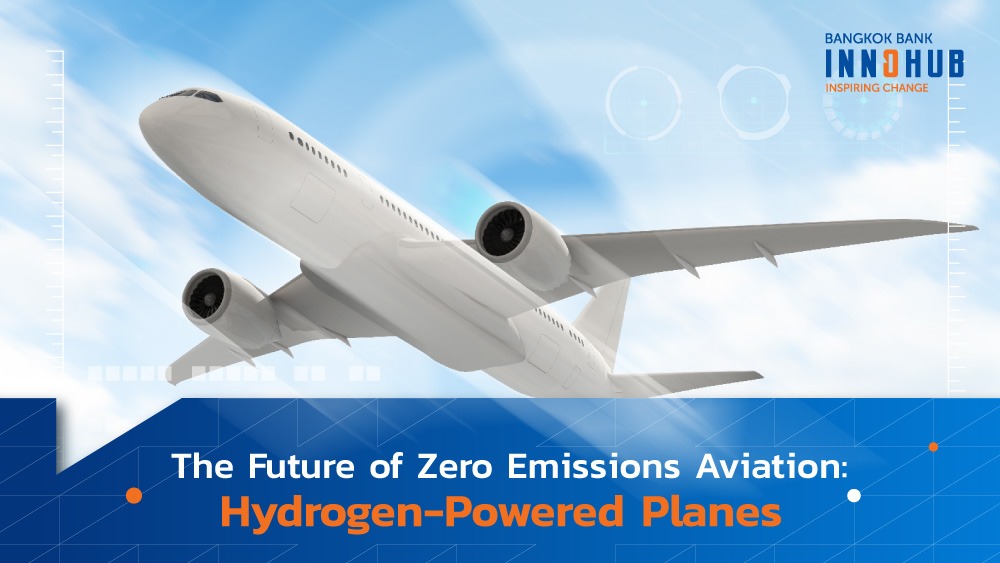Power without emissions is the holy grail of aircraft propulsion, and the hydrogen fuel cell is one of the most promising technologies to help achieve it. In 2021, the aviation sector accounted for over 2% of global energy-related emissions — a faster emissions growth rate than that of the road, rail, or shipping industries. With climate change of paramount concern, the problem of aviation emissions has to be tackled soon. And what better energy alternative is there than hydrogen, the most abundant element in the universe?
As we will see, modern innovations are improving hydrogen fuel cell technology to the point where it can be commercially applicable in flight — potentially charting a course for a cleaner future.
What are hydrogen fuel cells?
In 1838, Sir William Grove pioneered the generation of electricity via an electrochemical reaction rather than combustion. The fruits of his labor, fuel cells, differ from batteries in that they allow fuel and oxygen (typically air) to constantly replenish the chemical energy they use. Therefore, as long as both fuel and oxygen are present, fuel cells can produce clean electricity indefinitely.
Today, the most promising fuel cell technology for mobile applications is known as a Proton Exchange Membrane (PEM). In this type of fuel cell, hydrogen is used as fuel to directly generate electricity, with only heat and water as byproducts. Because this process produces no carbon dioxide or nitrogen oxide, as well as no or minimal contrails, incorporating this technology in aircraft is very appealing to the aviation industry. The result is an electricity-powered aircraft, equipped with fuel cells to generate enough power while remaining lightweight.
Hydrogen planes taking flight!
On January 19, 2023, at Cotswold Airport in Gloucestershire, UK, a Dornier 228 twin-engine aircraft operated by ZeroAvia, a British/American hydrogen-electric aircraft developer, successfully completed a test flight lasting around 10 minutes. Although relatively small in comparison to conventional passenger planes, the 19-seat H-19 was one of the largest aircraft to complete a flight while using, in part, hydrogen electric propulsion.
Just six weeks later, on March 2, 2023, US-based aviation manufacturer Universal Hydrogen took a Dash-8 50-seater plane on its maiden test flight in eastern Washington. The plane flew for 15 minutes using the largest hydrogen fuel cell ever, making it the largest plane to take flight while powered by a hydrogen fuel cell.
By 2025, ZeroAvia expects to have hydrogen electric propulsion technology in use for commercial flights. They also plan to expand the technology to 90-seater planes, with further expansion to narrowbody aircraft in the coming decade. Following that, ZeroAvia hopes to be able to propel 40–80 passenger aircraft over a distance of 700 miles by the year 2027.
Similarly, Universal Hydrogen anticipates shipping fuel cell conversion kits for regional aircraft like the Dash-8 by 2025. Presently, the firm has received nearly 250 retrofit orders from 16 clients, including Air New Zealand, with a total value of more than $1 billion.
Eureka!
On March 9, 2023, ZeroAvia broke records for power density when testing their High Temperature Proton Exchange Membrane (HTPEM) systems, paving the way for large-scale hydrogen-powered commercial aircraft in the near future.
For energy-intensive applications, such as the propulsion of large fixed-wing aircraft and rotorcraft, increasing the temperature and pressure within fuel cell stacks improves upon traditional fuel cell technologies by increasing energy efficiency, adding tolerance to fuel impurities, and improving both heat and water management. Furthermore, the ability to cool the system with air at higher temperatures and pressures reduces cooling drag, while opening the door to more demanding applications such as the propulsion of 40-80-seat aircraft — something that is not possible with traditional fuel cell technology.
In the future, HTPEM systems will be used to improve ZeroAvia’s powertrains for the propulsion of 40-80-seat aircraft, in addition to a variety of rotorcraft and eVTOL uses. This new generation of fuel cells may also be powerful enough to power electric propulsion systems in single-aisle turbofan aircraft with 100 or more seats, like the Boeing 737 and Airbus A320.
What’s more, ZeroAvia’s HTPEM components have been tested and proven to work in a variety of different environments, including at a top-tier national lab funded by the United States Department of Energy. The results of the tests show that HTPEM systems have the potential to hasten the creation of hydrogen-electric powertrains for larger aircraft, further solidifying hydrogen fuel cells as a viable alternative to fossil fuels.
Implications and challenges for the future
As the climate crisis becomes more urgent, so does the pressure on the aviation industry to reduce or eliminate emissions. With ZeroAvia’s and Universal Hydrogen’s successful test flights, the industry has taken a significant step forward toward realizing this dream. Large industry players such as Airbus have also stated their intention to put an A380 equipped with a hydrogen fuel cell engine through its paces in 2026. While these developments are highly promising, they come with their own set of challenges.
Due to its low energy density by volume, hydrogen would require about four times the space of jet fuel. Moreover, kerosene’s availability and its historically low price could provide a real barrier to change. The development of hydrogen-powered aircraft has also faced other significant obstacles since the middle of the 20th century, when research on its feasibility began.
Furthermore, in the midst of geopolitical uncertainty, inflation, and volatile energy prices, the infrastructure required to produce, transport, and distribute hydrogen will be a concern. Despite being the most abundant element in the universe, hydrogen does not naturally exist on its own. It must therefore be extracted from water via electrolysis, or separated from carbon-based fossil fuels. Both of these procedures are extremely energy-intensive and infrastructure-reliant, and without proper carbon capture and storage (CCS) systems, such extraction methods diminish hydrogen’s green credentials.
Ultimately, the promise of hydrogen fuel cells depends on the concerted efforts of governments and businesses around the world to establish the infrastructure necessary to ensure the practicality of such innovations. The scope of what needs to be done is enormous, as part of a complete overhaul of the world’s energy, manufacturing, transportation, infrastructure, and agricultural systems. Only then will we be able to create a clean and sustainable future for air travel, powered by hydrogen.




